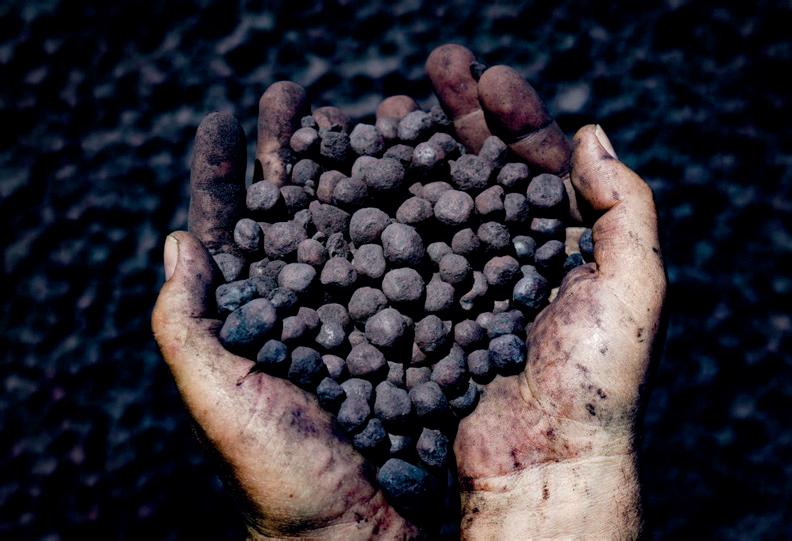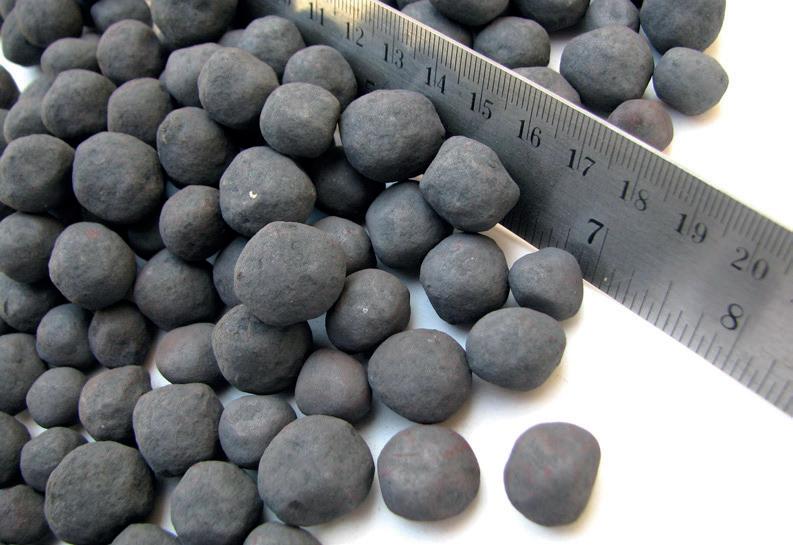
12 minute read
Local production of strategic goods
Rutger Gyllenram with a raw material producer in the cloth-supply chain and a bunch of grapes – or is it green DRI? Photo: Pelle Berglund Znapshot, DRI grapes: Emirates Steel and Therése Gyllenram
Must steel companies necessarily do their own iron ore reduction? Rutger Gyllenram* offers a story about David Ricardo, wine, cloth and green DRI
IT is easy to like David Ricardo (17721823), one of the great economists from the early 19th century. Apart from laying the ground for a system with independent central banks, that today is a role model in many countries stabilising the economy, he spoke out against slavery which he thought was a stain on the character of the nation. He also opposed protectionism during the Napoleonic war, making food more expensive and, therefore, life harder for the less fortunate. Ricardo’s perhaps most
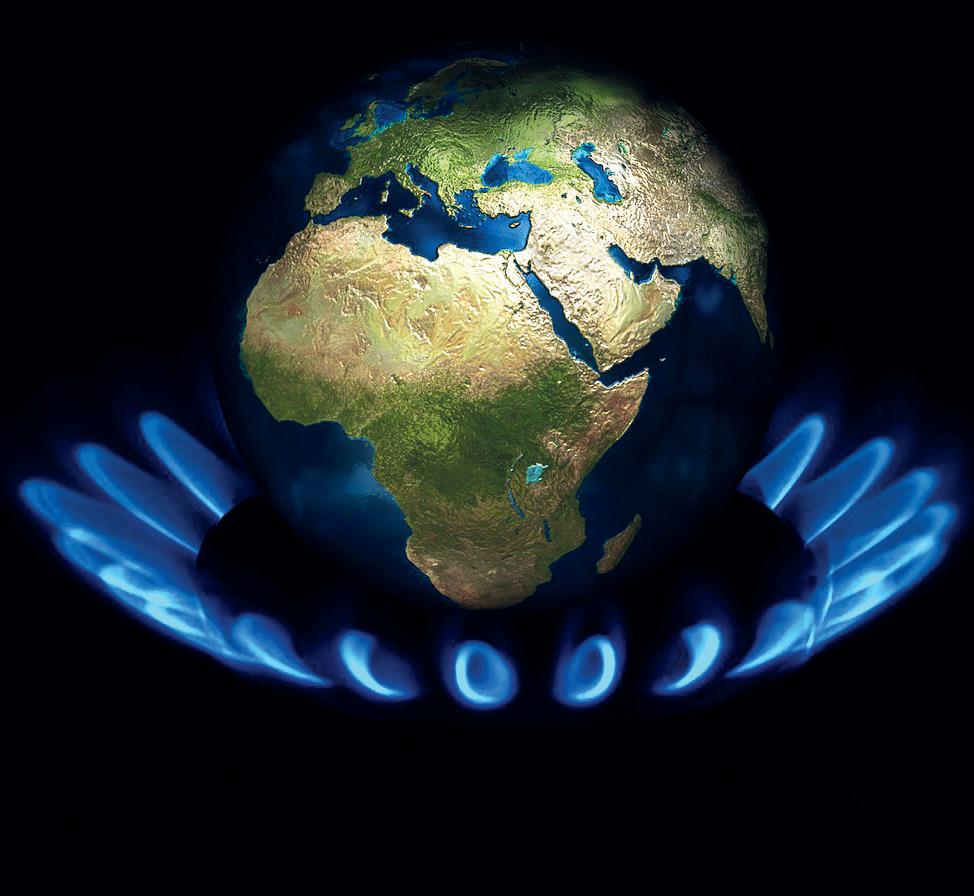
famous work is On the Principles of Political Economy and Taxation published in 1817 where he, among other things, presents the theory of competitive advantage advocating free trade. His example of production of cloth and wine in England and Portugal, where the latter had better conditions for vineyards and the former better conditions for manufacturing of textiles, is well known and his basic idea was that it is beneficial for both parties to specialize and trade.
Although not being an economist, I have always found it puzzling that we in the steel industry, for such a long time, have claimed it to be necessary to keep a fullscale steel industry in almost every country sometimes leading to operations with very poor profitability. I was once told that ‘the steel industry is the bedrock of our nation’s industry’ when performing a due diligence at an integrated plant in urgent need for money and with very little prospect of ever becoming profitable. In a country building up its basic industry and infrastructure, an ambition to keep the steel industry working within the country is understandable. In addition, the uncertainty that lies in long complicated supply chains may be a concern for companies of all countries in unstable times. Maybe, therefore, the prevailing model for ore-based steelmaking is still integrated reduction and steelmaking plants. The key questions are if that is an optimal solution when the steel industry now aims to decrease the emission of greenhouse gases to very low levels and if the industry is ready to try new supply chain models?
Although the entire steel life cycle contains steps that emit greenhouse gases, it is the iron ore reduction that is the greatest emitter and that at present is under scrutiny. Scrap-based steelmaking has lower emissions, but since available scrap is limited by the flow of obsolete products in society, increasing scrap-based steelmaking is not a possible solution. The dominant reduction furnace today is the blast furnace where iron ore is reduced and smelted to pig iron and blast furnace slag from iron ores of varying quality, coke, coal and limestone. Producing direct reduced iron, DRI, in a shaft furnace with a reduction gas is the main alternative to the blast furnace today. The product is solid in contrast to the liquid pig iron from the blast furnace and since the gangue from the ore stays in the DRI the ore quality is more of a concern in the DR process.
There are in principle only two ways to decrease emissions from iron ore reduction: 1. Applying carbon capture usage or storage, CCU/CCS (CCUS) 2. Replacing fossil carbon with ‘fossil free’ reductants and fuels.
This decrease must now start in a world where the energy and raw material availability sets limitations to our choice of technology. We are coming from a world where raw materials, like ore and coal, have been transported over the oceans at low cost and processed in standardised, energy-efficient processes. Steelmaking sites have to a large extent been chosen from a market perspective. We might be heading for a world where we are more restricted by existing industrial structures, available raw materials and energy supply than we want to acknowledge and production sites may become, to a larger extent, dependent on the raw material situation and the resulting process selection.
Decarbonisation with CCUS
In the ULCOS project, mainly financed by European taxpayers and completed in the first decade of this millennium, CCUS was the main method chosen. A blast furnace design was developed using oxygen instead of air as blast and with capture of CO2 in the top and recycling of the CO to tuyeres in the middle of the shaft to ensure heating of the burden. The concept of top gas recycling, TGR, was tested in the LKAB Experimental Blast Furnace and found promising, but plans to scale up the concept were never realised. As an alternative to the blast furnace, ULCOS also proposed a DR furnace with hydrogen made from natural gas using CCUS for the generated CO2.
It seems, that for a number of years, CCUS as a general method for decarbonisation in the steel industry was put aside partly due to technologies avoiding fossil carbon and partly due to arguments that CCS cannot be considered a long-term solution since carbon storage needs geological formations with certain characteristics that may be in short supply. It seems, however, that CCUS again is considered a necessary constituent in a decarbonisation roadmap. Especially storage or permanent usage of CO2 of biogenic origin that creates a carbon sink to make up for fossil emissions that cannot be avoided. It is hard to tell the reason for this

a)

b)
Fig 1. Tentative estimation of the cost of low fossil DRI production with: natural gas + CCS (amber), hydrogen (blue) and biogenic syngas + CCS (green) as a function of a) the cost for natural gas and biomass and b) the cost for electricity. The same cost for iron ore is assumed for the alternatives. Calculations based on the FerroSilva pre-study and first presented at the Worldsteel 57:th RAMCO meeting 2022.
sudden acceptance, but it is sad to realize that we have lost a decade of development that would have come in handy now.
Geographic areas considered suitable for storage of CO2 are often, but not exclusively, regions with oil and gas resources which means that these both have access to a reduction agent for DRI production and the means to store the resulting CO2.
Replacing fossil fuels with hydrogen, biogenic material and electricity
The most drastic move and the one frequently advocated today is to replace reduction in the blast furnace process with a gas based direct reduction furnace followed by smelting in an electric furnace. Choice of the smelting and steelmaking operations depend, among other things, on the ore quality. But the important necessary requirement when replacing melting in the blast furnace with melting in an electric furnace is that the electricity used has a very low carbon footprint since the blast furnace is highly energy efficient.
Gas based direct reduction is today performed with a reformed natural gas which is a mix of hydrogen and carbon monoxide. As an alternative, direct reduction can be made with pure hydrogen or a syngas of biogenic origin with an analysis similar to that of reformed natural gas. Hydrogen production in an electrolyser is restricted by the available amount of low fossil electricity and the transmission capacity; production of syngas on the other hand is restricted by the available amount of biomass within a reasonable transport distance.
With top gas recycling still very much on hold, the suggestions put forward to increase productivity and decrease CO2 emissions in the blast furnace are manyfold. Injection of biomass or hydrogen, use of biocoke or using electricity to improve the heat balance with electricity are some. A well-established method is to charge scrap or DRI in the blast furnace down to the limit where the coke charge is reduced to the minimum level determined by the need for furnace permeability. Supplying low fossil DRI to the blast furnace market as a complement to iron ore may prove an efficient way to partially decarbonise this dominant process. Iron ore is to a large extent traded across the globe. DRI production included in the supply chain may be done at the mine shipping side, the receiving port plant side or as a stopover service between the mine and the plant.
Production of low fossil DRI to be used in blast furnaces
So far, we do not have published reports on costs for full scale production of DRI with very low greenhouse gas emissions and, therefore, have to rely on estimations. A tentative calculation was made in the FerroSilva project aiming at producing DRI from DR pellets and a syngas from forest residue. A full paper with all the assumptions will be published in 2023, but the main cost figures are shown in Fig 1. The model assumes that all CO2 from the natural gas process is captured and stored as well as that from the biogenic gas thus, in the latter case, generating a ‘carbon sink credit’. It is provided here as a basis for discussion and to give an indication on how to understand strengths, weaknesses, opportunities and threats in a SWOT analysis.
Fossil free reduction with hydrogen
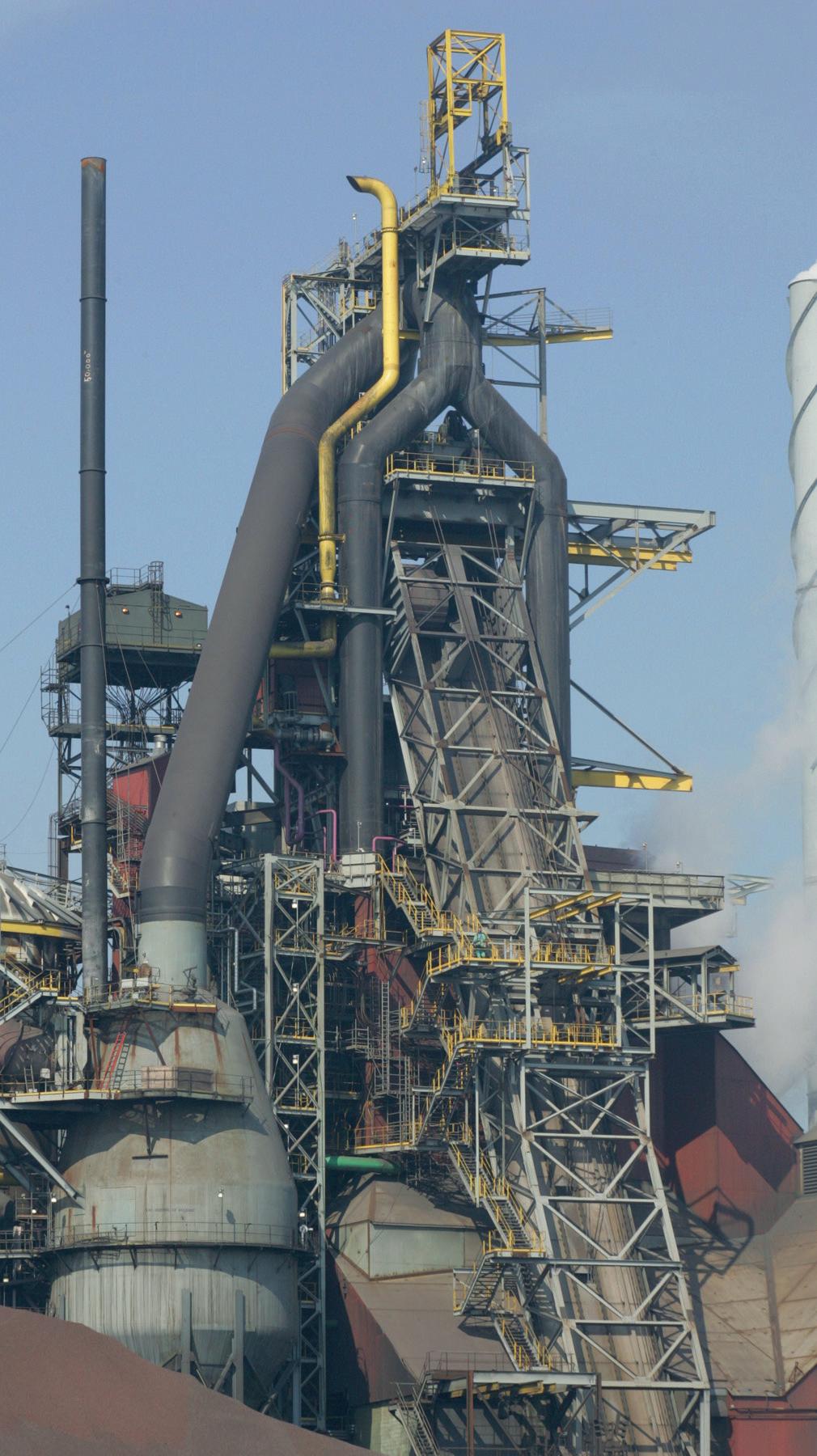
is sensitive to the electricity price, and electrolyser efficiency is definitely a weakness, but it has its strength in that it does not rely on CCS. Promising development in electricity and hydrogen production is an opportunity, but the dangers of handling hydrogen and possible complications from the endothermic nature of reduction with hydrogen may be considered a threat.
The main strengths of DRI production with syngas of biogenic origin are that it can use forest residue that otherwise would have been left in the forest to rot emitting methane, and that the biogenic CO2 can be either used or stored to create a carbon sink. A weakness is the voluminous nature of wood chips that may limit transport distances and that it is a material with varying properties that may be challenging. The rising interest worldwide in harvesting this material is an opportunity, but political ambitions in some regions, like in the EU, to restrict the use of bioenergy, for instance, is a grave threat.
DRI production with natural gas has the advantage of being low cost, well established, apart from a necessary complete capture of CO2, and with adjacent possibilities of CCS in natural gas-rich areas. The main weakness is the fact that leakage normally occurs in natural gas processing and that methane is a strong greenhouse gas. The opportunity is the vast amounts of natural gas that is available in certain regions, making possible production sites numerous, but in the case of a stopover service the main threat is the unwillingness of companies to lose control over the supply of critical raw materials.
Will we have a reduction stopover service in the future?
Since Fig 1 does not include transport of the DRI and since production conditions vary, the main conclusion is that all processes may be profitable at the mine side or the plant side of ore trade routes, but only reduction with natural gas may have the cost situation making it possible to have a stopover service for ore reduction covering the costs of extra unloading and loading. Furthermore, it is hard to imagine that we can transform the entire steel industry in such a short period that lies ahead of us without using the cheapest, most developed route available for us and that is direct reduction with natural gas with CCS. This may be a real business opportunity in the MENA region and other natural gas rich parts of the world.
From a decarbonisation perspective, as some companies have already identified, a stopover service for reduction is probably a faster way to start the road to the carbon neutral world than to invent completely new process lines and force through new fossil free electricity production. There are, of course, a number of questions that have been left out in this article, like transport and the advantages of charging hot DRI, but they are probably minor details in the big picture.
Sitting in our software lab at Kobolde, almost on the border to the arctic world, it is presumptuous to say that many companies worldwide are wrong in choosing to adapt their processes’ layout to keep integrated plants fully integrated. However, I am worried that transition to the suggested paths is unnecessary, slow and costly and may not only make us miss the goals set out to meet the Paris agreement but might cause us to miss abatement of greenhouse gases altogether.
Eventually, we should decide at which level we need to have local production of strategic goods to ensure undisturbed supply chains and to what extent we can rely on a rule-based world order where we can focus on doing what we do best and have competitive production conditions. Building trust and stability may prove as important as providing new technology. Like wine and cloth, all in the spirit of David Ricardo. �
This is the third and final article in a series about the conditions for DRI-production as a means to decarbonise steel production. The others are “Between a pony and a pink unicorn” STI October 2021, and “Betting on a winning horse” STI September 2022.
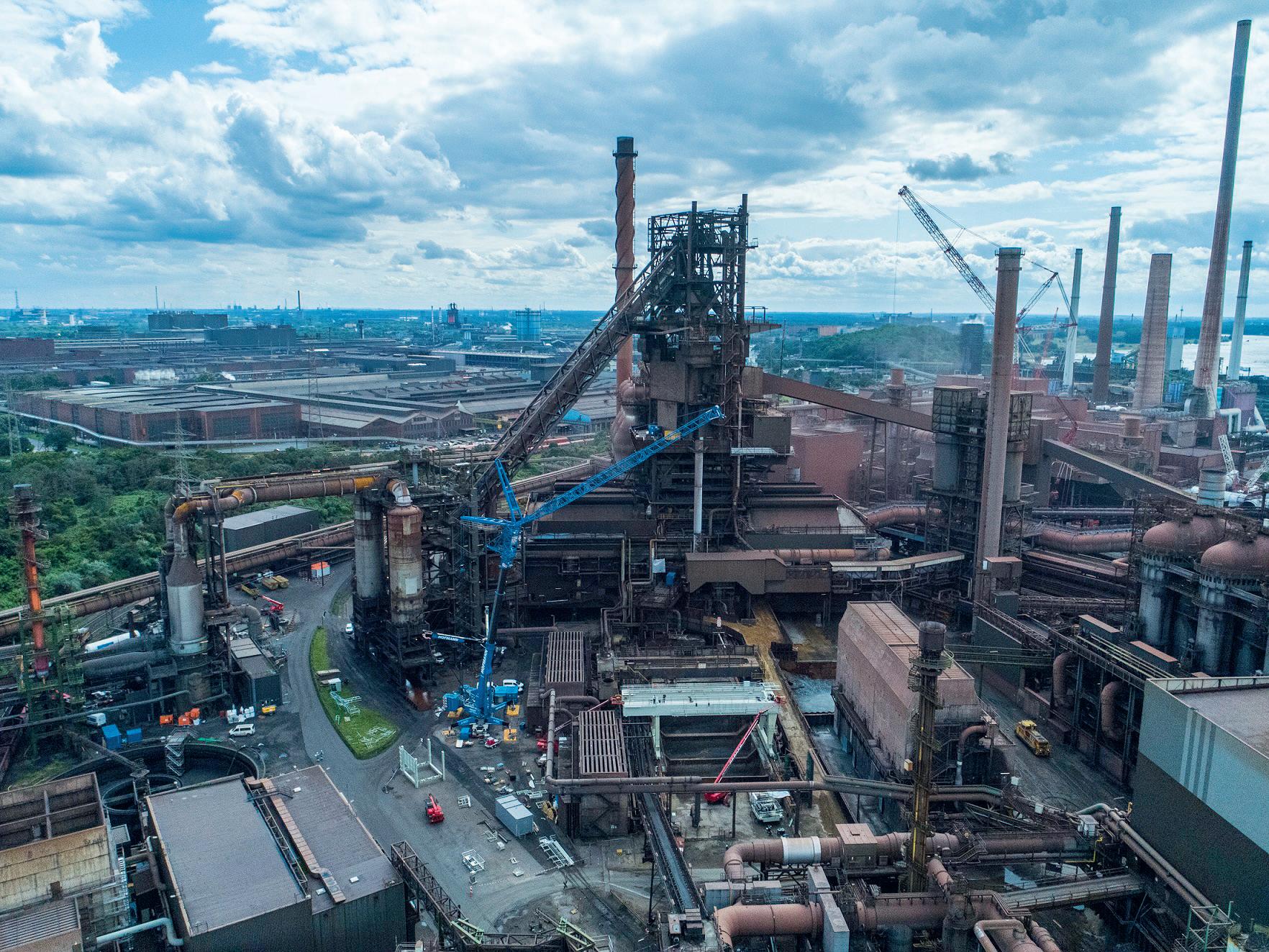
REDUCTION AS A STOPOVER SERVICE - A KEY TO FASTER DECARBONISATION OF STEEL PRODUCTION:
1. Produce low fossil merchant DRI/HBI where natural gas is cheap and CCS possible. 2. Create diverse and stable supply chains involving many (all?) stakeholders. 3. Create market conditions where both the DRI carbon footprint and composition matters.
NIAGARA
THE SCARABAEUS®7500 PELLETIZING DISC
IRON ORE & PELLETIZING TECHNOLOGY
Scarabaeus pelletizing discs provided by HAVER & BOECKER NIAGARA are used for sustainable and efficient production of iron ore pellets. The unit’s design minimizes circulation, increasing productivity and profitability. The pelletizing discs used for agglomerating iron ore concentrates into pellets are remarkable for their very narrow particle size distribution with a target size of 10 to 14 mm, important for DR-Processes.
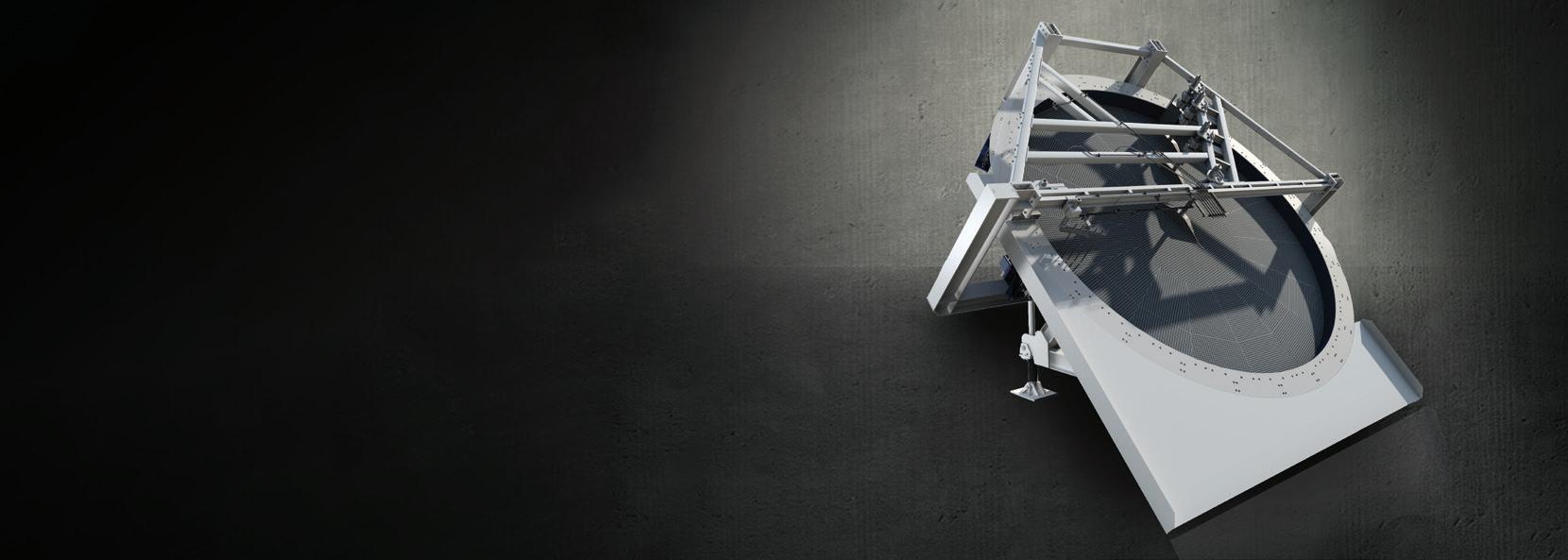
YOUR BENEFITS
1. IMPROVED PRODUCT QUALITY The Scarabeus process creates higher quality pellets, which can be sold at better prices due to significantly tighter particle size distribution spread and a higher iron ore content.
2. INCREASED PRODUCT OUTPUT The Scarabeus process generates higher tonnages by minimizing the material return rates and avoids double processing of over or undersized pellets due to automatic machine parameter adjustments, which can also adapt to varying material property fluctuations in the feed material.
3. REDUCED CO2 EMISSIONS The Scarabeus process creates pellets so high in quality that they can be utilized for the direct reduction process. This in return can create e normous CO2 emission savings, thus minimizing the mine’s impact on the environment.
